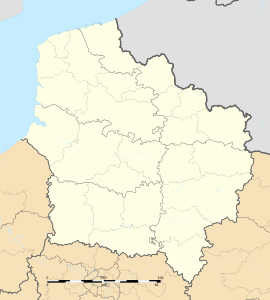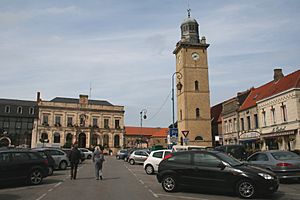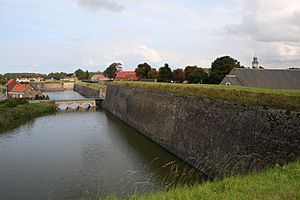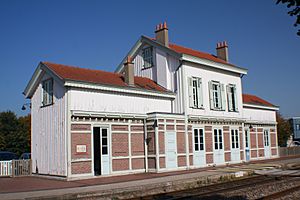Gravelines facts for kids
Quick facts for kids
Gravelines
Grevelingen
|
||
|---|---|---|
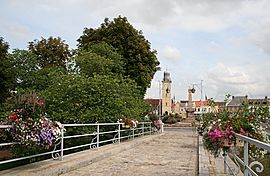
Place Charles Valentin
|
||
|
||
| Country | France | |
| Region | Hauts-de-France | |
| Department | Nord | |
| Arrondissement | Dunkerque | |
| Canton | Grande-Synthe | |
| Intercommunality | CU Dunkerque | |
| Area
1
|
22.66 km2 (8.75 sq mi) | |
| Population
(2021)
|
11,223 | |
| • Density | 495.28/km2 (1,282.8/sq mi) | |
| Demonym(s) | Gravelinois | |
| Time zone | UTC+01:00 (CET) | |
| • Summer (DST) | UTC+02:00 (CEST) | |
| INSEE/Postal code |
59273 /59820
|
|
| Elevation | 0–25 m (0–82 ft) (avg. 3 m or 9.8 ft) |
|
| 1 French Land Register data, which excludes lakes, ponds, glaciers > 1 km2 (0.386 sq mi or 247 acres) and river estuaries. | ||
Gravelines is a cool town in northern France, located in the Nord area. It sits right where the River Aa meets the sea, about 15 miles southwest of Dunkirk. This town was first built in the 12th century around a canal. This canal was made to connect the city of Saint-Omer to the sea.
Because Gravelines was on the edge of Spanish lands in Flanders, it became a very strong fortress. You can still see some of these old fortifications today!
If you visit, you'll find a lively market in the town square (called Place Charles Valentin) every Friday. The "Arsenal" building, near the square, has a large and interesting art collection. Outside, there are modern bronze statues to see. Gravelines is also home to a French professional basketball team called BCM Gravelines.
The Gravelines Belfry is a special tower in the town. It's one of 56 belfries in Belgium and France that are part of the UNESCO World Heritage List. This means it's recognized for its amazing architecture and its importance in the history of local government power.
A Look Back in Time: Gravelines' History
In the early 1100s, Saint-Omer was a very important port city in western Flanders. But over time, the sea started to get shallower, making it harder for ships to reach Saint-Omer. So, people built a canal to connect Saint-Omer to the new coastline, which is where Gravelines is now.
The name "Gravelines" comes from the Dutch words Gravenenga, meaning "Count's Canal." Because it was on the western border of Spanish territory, the new town was heavily fortified with strong walls and defenses.
In 1383, English forces led by Henry le Despenser captured Gravelines during a conflict called the Norwich Crusade. As the English left, they destroyed the town.
A famous meeting happened in Gravelines in 1520 between Holy Roman Emperor Charles V and Henry VIII of England. Two important battles also took place nearby. The first was a land battle in 1558, where Spanish forces won against the French. The second was a naval attack in 1588. During this battle, England's Royal Navy used fire ships against the Spanish Armada while it was anchored.
Gravelines was captured and recaptured many times by both the French and Spanish between 1639 and 1658. Finally, in 1659, it officially became part of France through a peace agreement called the Treaty of the Pyrenees. It wasn't until the 1800s that everyone in Gravelines spoke French.
On May 24, 1940, during World War II, German forces were ordered to stop their advance at the "Canal Line" which included Gravelines.
Modern Gravelines: What's Here Today?
Today, this small town is well-known for its large nuclear energy plant. This plant helps produce electricity for many homes. Gravelines also hosts two large OVH data centers, which are like huge computer storage facilities for the internet.
Images for kids




